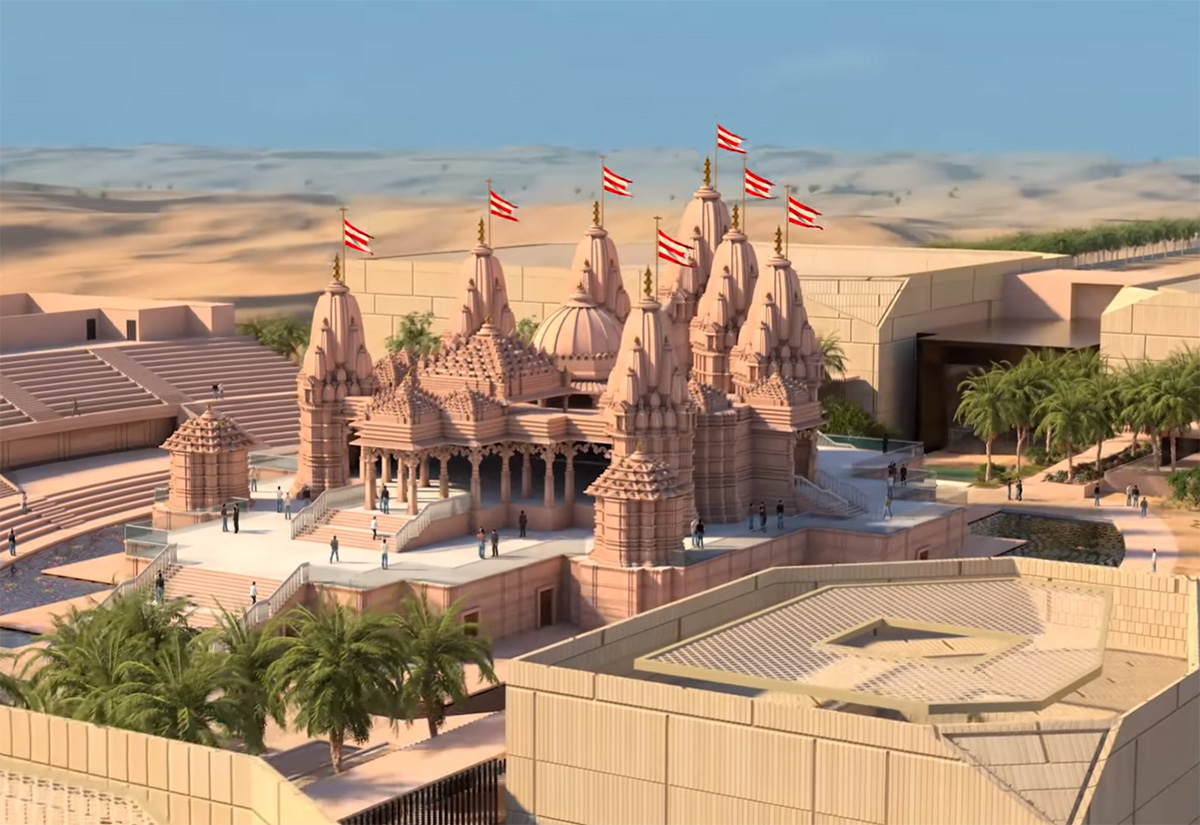The inaugural Hindu stone temple in Abu Dhabi is scheduled to open to the public on March 1st.
Constructed by the Bochasanwasi Shri Akshar Purushottam Swaminarayan Sanstha (BAPS) Swaminarayan Sanstha, the temple stretches across a vast 27-acre expanse in Abu Mureikhah near Al Rahba, just off the Dubai-Abu Dhabi Sheikh Zayed Highway. Prime Minister Narendra Modi inaugurated the grand temple on February 14 during a dedication ceremony attended by over 5,000 invitees.
NEW DELHI: Abu Dhabi's inaugural Hindu stone temple, unveiled by Prime Minister Narendra Modi earlier this month, will welcome the public starting March 1, according to temple authorities. Open six days a week, from 9 am to 8 pm, excluding Mondays, visitors can explore the temple, erected at an estimated cost of Rs 700 crore.
Constructed by the Bochasanwasi Shri Akshar Purushottam Swaminarayan Sanstha (BAPS) Swaminarayan Sanstha, the temple sprawls over a vast 27-acre site in Abu Mureikhah near Al Rahba, adjacent to the Dubai-Abu Dhabi Sheikh Zayed Highway. During a dedication ceremony graced by over 5,000 invitees, PM Modi inaugurated the magnificent temple on February 14. From February 15 to 29, pre-registered overseas devotees and VIP guests had the privilege to visit the temple.
The temple, crafted with 18 lakh bricks and 1.8 lakh cubic meters of sandstone sourced from Rajasthan, follows the Nagara architectural style, reminiscent of the recently unveiled Ram Temple in Ayodhya. Presently, the BAPS Hindu Mandir stands as the largest in the entire Gulf region, with Dubai already hosting three other Hindu temples. The stone temple features seven spires, symbolizing the seven Emirates of the UAE, in tribute to the host country. Swami Brahmaviharidas, head of international relations for BAPS, informed PTI that "the seven spires house idols of deities, including Lord Ram, Lord Shiv, Lord Jagannath, Lord Krishna, Lord Swaminarayan (revered as a reincarnation of Lord Krishna), Tirupati Balaji, and Lord Ayappa. These seven shikhars represent the seven Emirates of the UAE."
To honor the host country, the temple's design incorporates UAE's national bird, the falcon, and animals like elephants, camels, and lions, which hold significant places in Indian mythology. The temple narrates 15 stories from India, including the Ramayana and Mahabharata, and tales from various other civilizations such as Mayan, Aztec, Egyptian, Arabic, European, Chinese, and African. The temple's outer walls are clad in sandstone imported from India, while its architectural elements feature two ghumats (domes) - the "Dome of Peace" and the "Dome of Harmony", twelve samrans (dome-like structures), and 402 pillars. Flanking the temple are representations of holy water flowing from Ganga and Yamuna, brought from India in large containers. The temple complex also comprises a visitor's center, prayer halls, library, classroom, playground, garden, and shops for the public.

